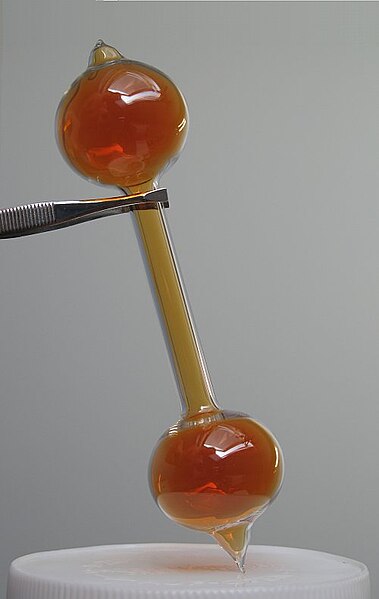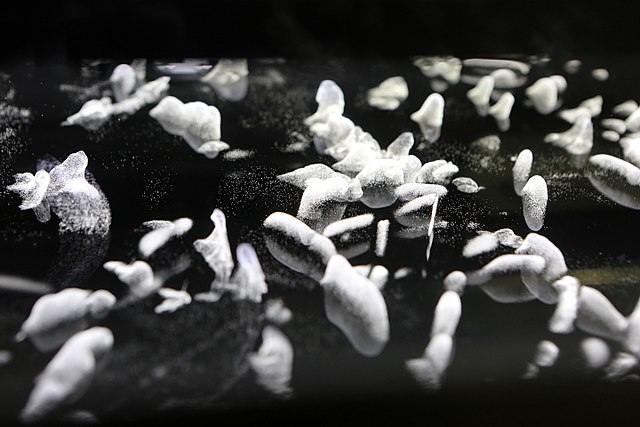Critical point (thermodynamics)
In thermodynamics, a critical point is the end point of a phase equilibrium curve. One example is the liquid–vapor critical point, the end point of the pressure–temperature curve that designates conditions under which a liquid and its vapour can coexist. At higher temperatures, the gas cannot be liquefied by pressure alone. At the critical point, defined by a critical temperature Tc and a critical pressure pc, phase boundaries vanish. Other examples include the liquid–liquid critical points in mixtures, and the ferromagnet–paramagnet transition in the absence of an external magnetic field.
Subcritical ethane, liquid and gas phase coexist. Critical point (32.17 °C, 48.72 bar), opalescence. Supercritical ethane, fluid.
Critical carbon dioxide exuding fog while cooling from supercritical to critical temperature.
In physics, a vapor or vapour is a substance in the gas phase at a temperature lower than its critical temperature, which means that the vapor can be condensed to a liquid by increasing the pressure on it without reducing the temperature of the vapor. A vapor is different from an aerosol. An aerosol is a suspension of tiny particles of liquid, solid, or both within a gas.
An ampule of nitrogen oxide vapor: brown nitrogen dioxide and colorless dinitrogen tetroxide, in equilibrium
If the vapor pressure exceeds the equilibrium value, it becomes supersaturated and condenses on any available nucleation sites e. g. particles of dust. This principle is used in cloud chambers, where particles of radiation are visualized because they nucleate formation of water droplets.
Invisible water vapor condenses to form visible water droplets called mist





